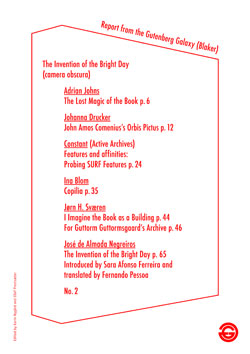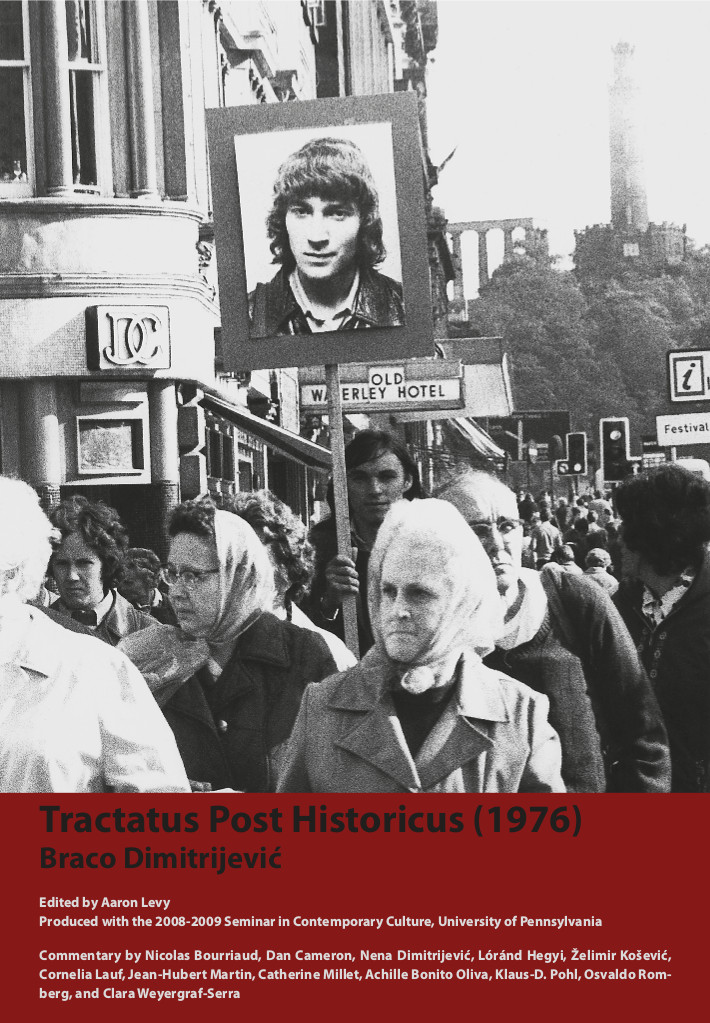Elena Filipovic: The Apparently Marginal Activities of Marcel Duchamp (2013)
Filed under thesis | Tags: · archive, art, art history, curating, museum, photography, reproduction
“This study focuses on a series of fugitive operations that Marcel Duchamp incited in order to test, theorize, position, and even make his work as such. Not conventionally “artistic” in nature, even if intimately connected to the collection, presentation, reception, and valuation of art, these activities include Duchamp’s role as administrator, archivist, art advisor, curator, publicist, reproduction-maker, and salesman of his own oeuvre. Rather than merely procedural, auxiliary, or incidental, they might be thought of as constitutive, resulting in a still understudied but profoundly influential output by an artist who redefined so much of what, hence forth, would be called art. Here, those most iconic of Duchamp’s inventions, the readymades, although not the central objects of this study, are understood as significant insofar as they were not simply “nominated” to become artworks, but more importantly, because they were curated. It is precisely through curatorial operations—relative to much of Duchamp’s production, and constituting one of the central activities that this dissertation explores—that the artist rendered the discourse, institutions, marketing, and presentational strategies of art into something like his cardinal “medium.”
Tracing Duchamp’s perennial relationship to photography, reproduction, the museum, and the archive, and spanning the period between 1913 and 1969, three chapters closely examine a number of undeniably material things: chapter one considers the artist’s boxes of photographically replicated notes, the Box of 1914 (1913-14) and Boîte verte (1934); chapter two examines documentation of ephemeral exhibitions, recording Duchamp’s curatorial interventions as well as suitcases filled with miniature reproductions, the Boîte-en-valise (1938-42); and chapter three is dedicated to a permanent installation, Etant donnés 1. la chute d’eau, 2. le gaz d’éclairage (1946-66). However, the premise of this dissertation is that all of these gain a new significance if studied in relation to the elusive activities that actually constituted them as artworks. Together, they formed a counter-conception of the role of the artist, articulating—and complicating—the conceptual stakes of much of what is known of his practice and thickening into what Walter Benjamin called the artist’s “theory of the work of art.”” (Abstract)
Ph.D. Dissertation
Advisor: Hal Foster
Publisher Art and Archaeology Department, Princeton University, 2013
507 pages
PDF (2 MB)
PDF (images section) (10 MB)
Report from the Gutenberg Galaxy (Blaker), 1-2 (2015) [English/Norwegian]
Filed under booklet | Tags: · archive, art, artists book, book

A series of two publications released in connection with the exhibition project The Gutenberg Galaxy at Blaker
(2013–2015) which takes as its point of departure the archive of the artist Guttorm Guttormsgaard, a collection of tens of thousands of objects he has collected with the intention of “documenting necessary impulses to keep one’s spirits up.” The archive is located in a former dairy in Blaker, a village 40 km northeast of Oslo. Guttormsgaard has referred to the printed book as a model for his own artistic practice. The project aims to reimagine the book today.
With texts by Wolfgang Ernst, Constant, Guttorm Guttormsgaard, et al. (1), Adrian Johns, Johanna Drucker, Constant, Ina Blom, Jørn H. Sværen, José de Almada Negreiros (2).
Edited by Karin Nygård and Ellef Prestsæter
Publisher Rett Kopi, Blaker, 2015
38 & 90 pages (EN)
via Ellef Prestsæter
Exhibition review: Stian Gabrielsen (Kunstkritikk, 2014, NO).
Interview (Kunstkritikk, NO)
No. 1 (English, 11 MB, PDF)
No. 2 (English, 32 MB, PDF)
No. 1 (Norwegian, 7 MB, PDF)
No. 2 (Norwegian, 19 MB, PDF)
See also third volume.
Braco Dimitrijević: Tractatus Post-Historicus (1976/2009) [EN, DE]
Filed under book | Tags: · archive, art, art history, conceptual art, history

“Tractatus Post-Historicus (1976), a philosophical manifesto about the idea of “post history,” as well as other early writings including Why I Paint Like Pollock (1972), are newly reprinted in this comprehensive publication by and about conceptual artist Braco Dimitrijević. His works are accompanied by accessible commentary by leading critics and curators, including Nicolas Bourriaud, Dan Cameron, Lóránd Hegyi, Jean-Hubert Martin, Catherine Millet, Achille Bonito Oliva, and others, as well as extensive reproductions of the artist’s visual works and installations, in particular his ongoing Casual Passer-By series (1971-). Working furtively in urban spaces saturated with messages of advertising and cultural industry, the artist hopes to transform and restructure the meaning of public images by inhabiting and defunctionalizing them. As with his work in general, he seeks to create another space, a counter-model to dominant thought, one that creates not just a reversal in meaning but also a rupture in perception.”
Edited by Aaron Levy
Publisher Slought Books, Philadelphia, and University of Pennsylvania, 2009
Contemporary Theory series, 3
ISBN 9780981540955
263 pages
PDF (6 MB, from publisher)
Comment (0)
